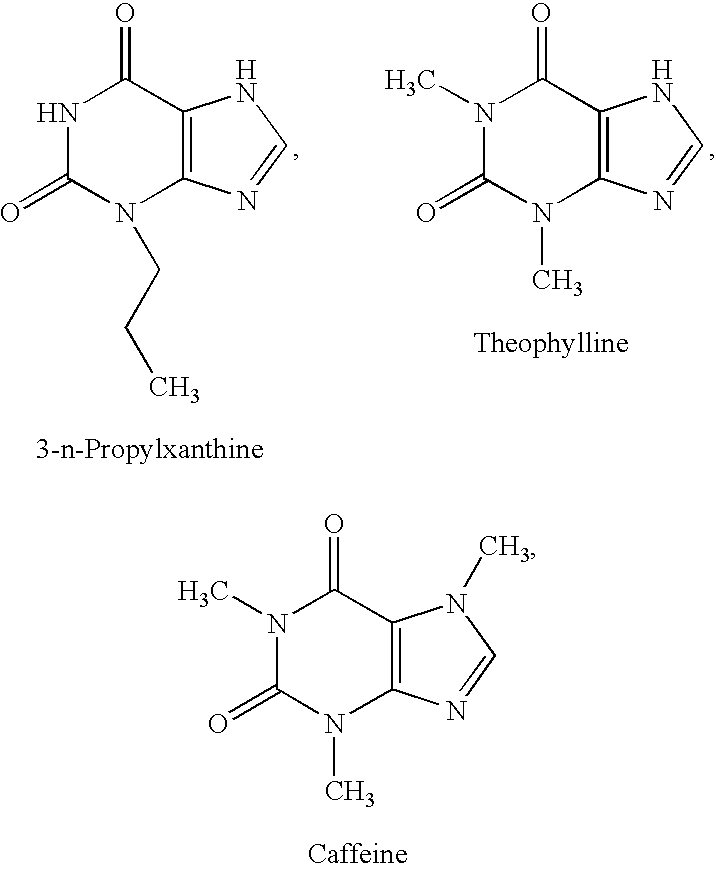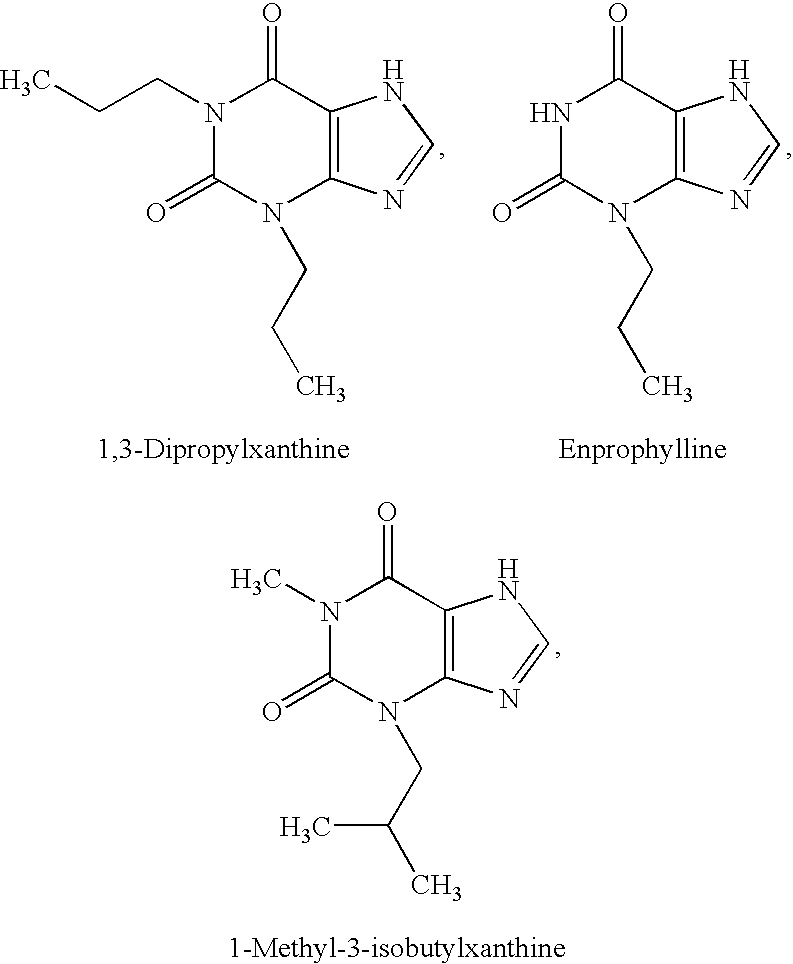2-Aminopyridine compounds and use thereof as drugs
a technology of aminopyridine and compound, applied in the field of new drugs, can solve the problems of compound having an excellent antagonism to an adenosine receptor and also acting effectively as a medicament, and have never been found
- Summary
- Abstract
- Description
- Claims
- Application Information
AI Technical Summary
Problems solved by technology
Method used
Image
Examples
reference example 1
[0107] 1-(2-Furyl)-2-(4-pyridyl)-1-ethanone 37
[0108] In a nitrogen atmosphere, lithium bis (trimethylsilyl) amide (100 mL, 100 mmol) was added dropwise into a solution of 4-picoline (4.6 g, 49.4 mmol) and ethyl 2-furancarboxylate (7.7 g, 54.9 mmol) in tetrahydrofuran (40 mL) at 0.degree. C. over 1 hour, followed by stirring as it was for 2 hours. Hexane (140 mL) was added to the reaction solution, and the resulting crystals were collected by filtration. The resulting crystals were dissolved in ethyl acetate and an aqueous saturated solution of ammonium chloride. The organic layer was washed with an aqueous saturated solution of ammonium chloride (.times.2) and brine, dried over anhydrous sodium sulfate, and concentrated. Hexane was added to the residue, and the resulting precipitates were collected by filtration and washed with hexane, to give the title compound (6.5 g, 70%) as a pale yellow solid.
[0109] .sup.1H NMR (400 MHz, DMSO-d.sub.6) .delta. ppm; 4.26 (2H, s), 6.77 (1H, dd, J=...
reference example 2
[0110] 3-(Dimethylamino)-1-(2-furyl)-2-(4-pyridyl)-2-propen-1-one 38
[0111] N,N-Dimethylformamide dimethylacetal (5 mL) was added to 1-(2-furyl)-2-(4-pyridyl)-1-ethanone (2.0 g, 10.7 mmol), followed by stirring at 100.degree. C. for 2 hours. After cooling as it was, the reaction solution was diluted with ethyl acetate and an aqueous saturated solution of ammonium chloride. The aqueous layer was extracted with ethyl acetate (.times.6). The combined organic layer was dried over anhydrous sodium sulfate and concentrated, to give the title compound (2.5 g, 97%) as a reddish brown oil.
[0112] .sup.1H NMR (400 MHz, DMSO-d.sub.6) .delta. ppm; 2.80 (6H, br s), 6.53 (1H, br), 6.60 (1H, br), 7.10 (2H, d, J=4.0 Hz), 7.65 (1H, br), 7.75 (1H, s), 8.44 (2H, d, J=4.0 Hz).
reference example 3
[0113] 6-(2-Furyl)-2-oxo-5-(4-pyridyl)-1,2-dihydro-3-pyridinecarbonitrile 39
[0114] Sodium methoxide (1.20 g, 22.2 mmol) was added to a solution of 3-(dimethylamino)-1-(2-furyl)-2-(4-pyridyl)-2-propen-1-one (2.27 g, 9.37 mmol) and2-cyanoacetamide (950 mg, 11.3 mmol) in N,N-dimethylformamide, followed by stirring at 80.degree. C. for 2 hours in a nitrogen atmosphere. After cooling as it was, the reaction solution was concentrated and diluted with water. After neutralized with 6 N hydrochloric acid, the resulting solid was collected by filtration and washed with water, to give the title compound (1.78 g, 72%) as a pale brown solid.
[0115] .sup.1H NMR (400 MHz, DMSO-d.sub.6) .delta. ppm; 6.64 (1H, dd, J=1.6, 4.0 Hz), 6.92 (1H, d, J=4.0 Hz), 7.24 (2H, dd, J=1.6, 4.4 Hz), 7.75 (1H, dd, J=0.8, 1.6 Hz), 8.21 (1H, s), 8.57 (2H, dd, J=1.6, 4.4 Hz).
PUM
| Property | Measurement | Unit |
|---|---|---|
| Length | aaaaa | aaaaa |
| Molar density | aaaaa | aaaaa |
| Molar density | aaaaa | aaaaa |
Abstract
Description
Claims
Application Information
 Login to View More
Login to View More - R&D
- Intellectual Property
- Life Sciences
- Materials
- Tech Scout
- Unparalleled Data Quality
- Higher Quality Content
- 60% Fewer Hallucinations
Browse by: Latest US Patents, China's latest patents, Technical Efficacy Thesaurus, Application Domain, Technology Topic, Popular Technical Reports.
© 2025 PatSnap. All rights reserved.Legal|Privacy policy|Modern Slavery Act Transparency Statement|Sitemap|About US| Contact US: help@patsnap.com



